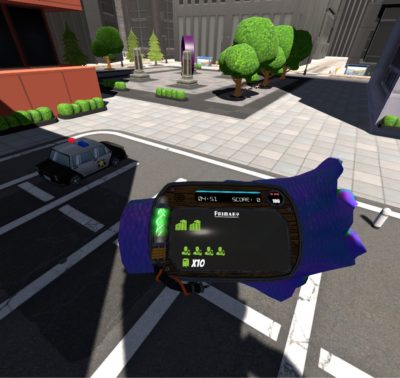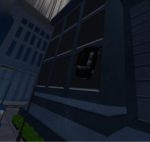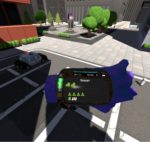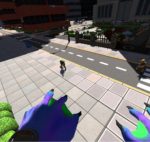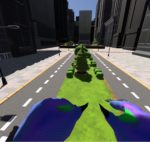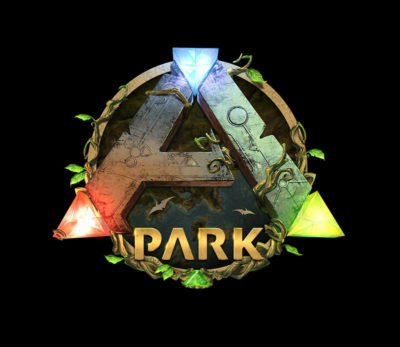
Developer/Publisher: Snail Games || Overall: 2/10
You’d think a Jurassic Park sort of experience would be a shoe-in for a decent VR experience, right? Go to a park, see huge dinosaurs, maybe run away from some. What’s that, you say? “But what about crafting and collecting bullshit“? Sure, why not? “What about terrible voice acting and jerky animations“? I dunno, man. This is starting to sound like a crappy game. “What about spelling errors, wrong dinosaur scale and aimless gameplay“?
ARK Park is a VR game using assets from another game with a similar name, ARK: Survival Evolved, which is a sandbox game where players wake up on an island, harvest resources, build bases and tame and fight dinosaurs. The parent game is a decent title with some kind of annoying DLC practices and constant feature creep; there is very little in common in the ARK Park flavor of digital entertainment, besides dinosaurs and the models used to represent them. Not a problem in itself, but to avoid confusion I think it’s important to point out that this is not ARK: Survival Evolved in VR. Also, be aware: though somewhat standard (though unimpressive) for VR, the game only makes use of teleportation for player movement. There are no free movement options, nor is there comfort options for teleporting, outside of moving around in room-scale.
The tutorial has you battling the ambient loud sounds to hear some robotic dragonfly (with some terribly robotic voice-acting) bark some commands to you. As you step out of some shuttle, you’re asked to get into a tram while dolphin noises, that must have been recorded from a TV, play over the tram’s loudspeakers. Some unnecessary dialog is thrown at you as you watch a mosasaurus jump out of the water. Finally, you get to the park where you’re greeted with a loading screen as you go up the stairs. In the next area, a lobby of sorts, there is holographic stuff you can bore yourself to tears with as the robot forces you to pick up and throw small holographic dinosaurs at a display, or just around a map, before being guided to command and feed some more of them. As an educational experience, there’s minimal here aside from a display that’ll narrate a small selection of descriptions on some choice dinosaurs. Not a lot going on besides that.
Eventually, you make your way to a camp where you grow a dinosaur and feed it, and are given a crash course on the inventory and storage. Before long I was “riding” on top of my triceratops through some section of forest (an “on rails” section) while some bullshit happens to the mind controlling devices that make the dinos slothful and passive. Someone commandeers my annoying robo-dragonfly cohort and tells me I’m an idiot and I should risk my life to save the park by repairing the brain washing devices. Why one exploded isn’t really delved into, nor the fact that dinosaurs are routinely aggressive to each other. I mean, how effective are they if you can see two huge gorillas fighting over a cliffside, or a T-Rex chasing some fat pig thing around? Anyway, I’m instructed to go to another area and use some sort of DNA sequencing gun (Isn’t this a park? Didn’t they make these things? Why don’t they have the DNA on file?) to collect genes in order to make a pistol. For materials, I’m entrusted to use gloves that make my hands monstrous to collect berries and grass, and a pickaxe to collect wood and other materials.
I craft a gun, presumably from the berries, and go to the practice range, where I proceed to bullseye all the targets while the robot follows me around telling me that she hopes I shoot better when my life is on the line (seriously, the tutorial is just crammed so fucking full of bad writing that most of it isn’t even memorable). I warp to some contraption that the robot needs to fix while I shoot dinosaurs. Despite the strange reload mechanics, which is shake to reload or suffer a painfully slow auto reload, I manage to kill everything without an issue. We win, and she pulls out some fuckin’ Leeroy Jenkins line from the mid 2000’s in an attempt to undermine my accomplishment. Someone at Gearbox probably finds this shit funny and engaging, but I’m already looking forward to taking off my Vive.
The main game has much less in terms of guidance or goals. Considering I don’t really give much of a shit about dinosaurs, since I can proudly say that puberty only left “space pirate” behind in my list of interests during the transition to adulthood, those goals are still a mystery to me. I don’t get why I’d want a Triceratops, or why I’d want to spray paint graffiti (no seriously, it’s part of the tutorial) or what I’d want a machete for.
After you’ve created a player with an eclectic assortment of clothing ranging from “generic cowboy” to a ghillie suit, you’re dumped in to the same area of the park where the game began: the tram. These sequences are exactly the same on the second pass in, by the way. I use what I learned from the tutorial to skip all the monotonous parts of the park and go back to the “exploration” areas of the game. These areas are places where you collect resources, scan dinosaurs and sometimes throw a rock at something. The scanning mechanic is really stupid — the gun needs to be aimed at the head of whatever is running past you or whizzing by your face as it flies through trees or over obstacles. Scanning these animals will give you “genes” which are used to unlock things like a machete, a bow, a torch, or other tools. Your guess is as good as mine why they landed on this mechanic.
Now, I know this game’s plot is paper-thin, but for all this talk about making dinosaurs docile using mind control stuff, I think it’s important to note that the dinosaurs sure fucking fight a lot in the wild. It just seems weird to have the tutorial hinge so much on that aspect and have there be no discernible link between that idea and the dinosaur’s behavior when you’re out exploring areas. Maybe it’s because you’re not fixing them, but it’s still odd.
I’m not sure if the hot-air balloon was rideable, but there was a section where I could ride in a jeep with the most canned fuckin’ one-liners hurled at me every few seconds. Dinosaurs of varying sizes and temperaments would block the road while the driver complained each time, as if I had unknowingly signed up for a VR ride-sharing program. A carnotaurus would slap the jeep and he’d whine about how annoying they are, when he should be complaining about how small they were. He’d zip between a bronto’s legs, slicing off mounds of cheese before unloading a jar of cheez-wiz when the gigantosaurus flopped for ten seconds, presumably to give me a spook. Honestly, this shit belongs in Disneyland with all the other crappy, over-acted attractions with no interaction.
I spent some time digging around my inventory and crafting station, and found that because I didn’t have a better copy of the game, there was an item that I couldn’t remove, bitching at me to buy the deluxe version of the game to use it. Thanks. Good to know that ARK is becoming more saturated with this kind of annoying bullshit. Meanwhile, it had no problem promptly accepting the other egg I was given into the trash, rather than my inventory slot that was near it. My fault, sure, but I didn’t pick where the inventory spots spawned over, nor did I think it would just go right through into the trash. You never know, I may have wanted to grow that thing.
I gave a “battle” level a shot, which was much like the tutorial: I guarded a machine while dinosaurs rushed at it. It seems just getting close to the machine is enough to damage it, so I intended to blow everything that moved away the moment I saw it. It was pretty easy until a Megapithecus came, stomped me, and three-shot the tower. This was the “easy” level, by the way. I’m not even entirely sure what I should have done differently, as he jumped down, towering above me, slapped me into submission, and took out the tower while I was out of play. This game has multiplayer, but it wasn’t clear if I’d come back from that or not by myself. VR wave shooters are really, really common. It takes a particular level of polish or ingenuity to get a pass for this, and ARK Park just doesn’t deliver.
The game is rife with spelling and grammar errors at every turn, from frogs that are a “Titanboa’s favorite desert” to an error in some machine that claimed “Species data that can not be loaded.” Even their Tek Package ad calls the Mech T-Rex “Iron steal.” This game’s not very deep, it’s not hard to come across all of these. With added things, like the comically large “gloves” used for harvesting bushes, jerky animations on some dinosaurs and “pulling” vines, strange dinosaur scale and crappy gameplay, I’m convinced this went through a limited QA run and was shoved out to appease the folks that were waiting for this, all four of them at Gearbox that were really waiting for that “.333 repeating chance” of success joke to land. This is what passes for writing these days. Speaking of which: hire me and fire your writers. I could use the dough, and the mess you’ve got here is bordering on needing FEMA relief (side note: unlike FEMA I’ll actually deliver).
Why this is an ARK game eludes me. If anything, they should have dropped all the crafting and pointless stuff and focused on being even remotely educational with some mini games around that. At least then it’d have some merit of its own. This doesn’t really play like an ARK game, it doesn’t have the same goals as one, and it’s much less fun than the game that it is based on, but has shoehorned in crafting and gathering ’cause “that’s what the real one does”. It’s painfully and obviously forced. In fact, if they just added VR support to ARK: Survival Evolved, even as limited as HMD support with mouse/keyboard or controller, there would be something considerably more enjoyable to toy around in.
If you’re looking for a dinosaur game, play ARK: Survival Evolved instead if you can stomach the semi-rough experience. Otherwise, save the $40 you’d waste here and go buy scratchers or something.

 Developer/Publisher: Codex Worlds || Outlook: “NOT FUNCTIONAL”
Developer/Publisher: Codex Worlds || Outlook: “NOT FUNCTIONAL”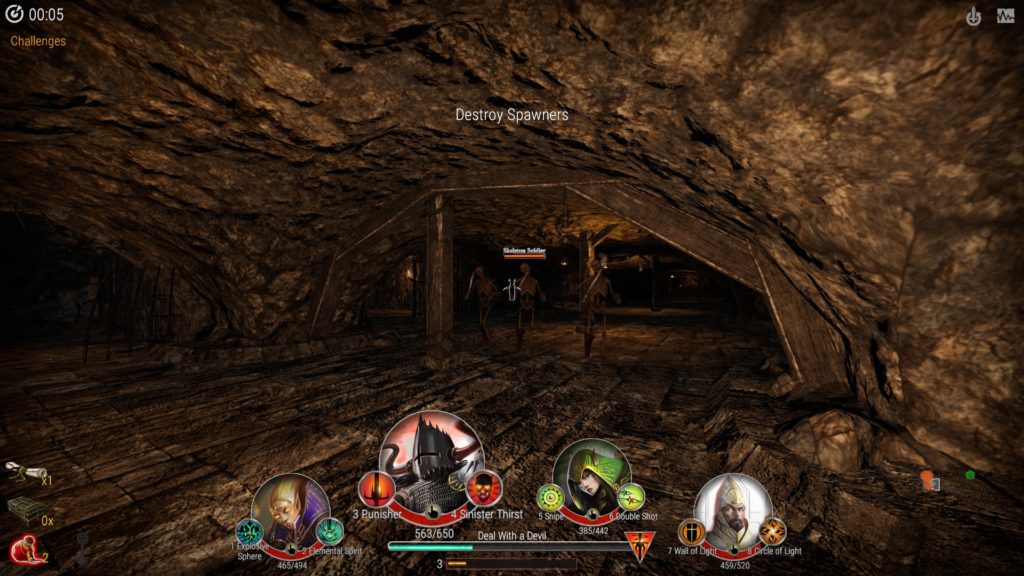

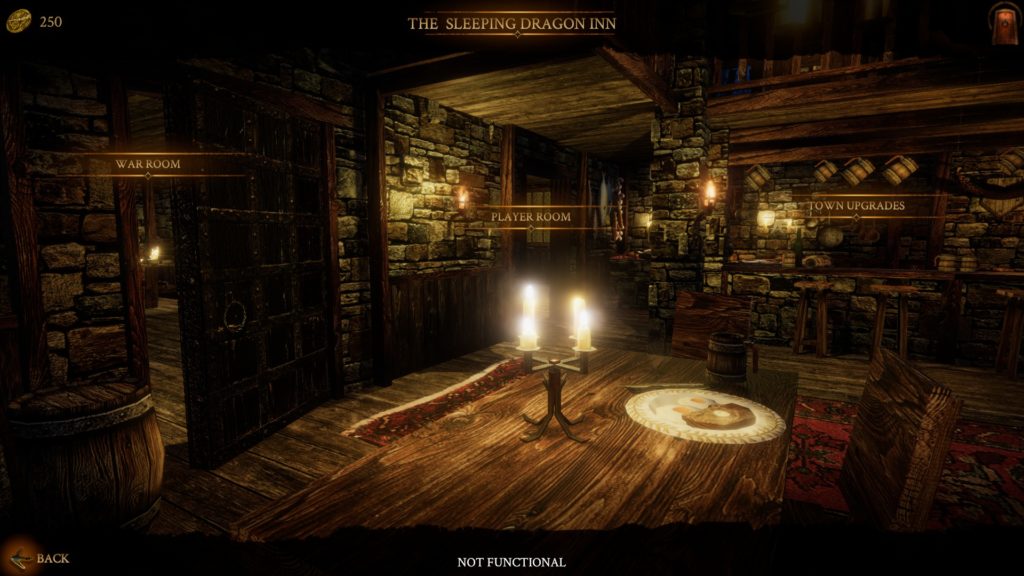
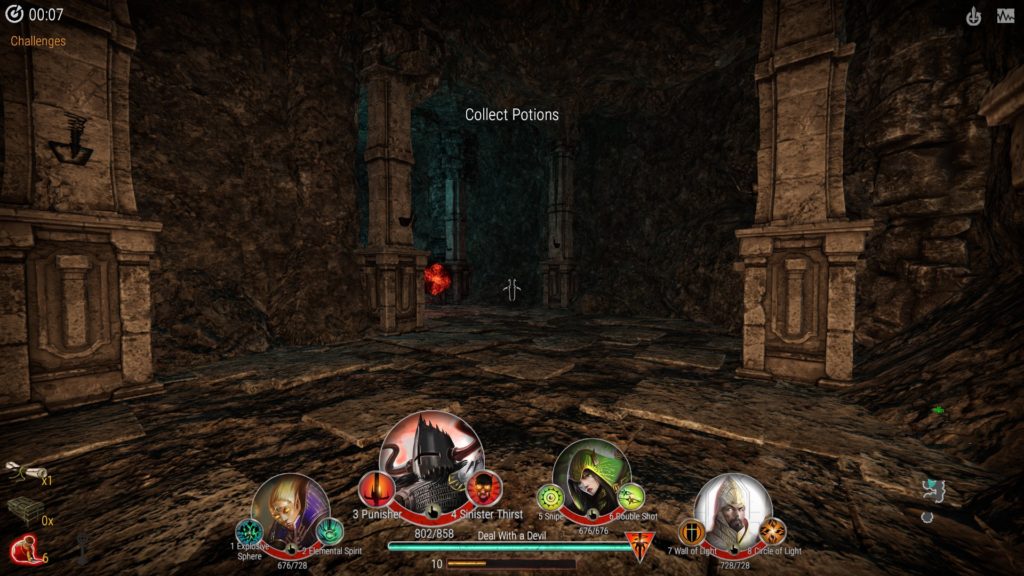
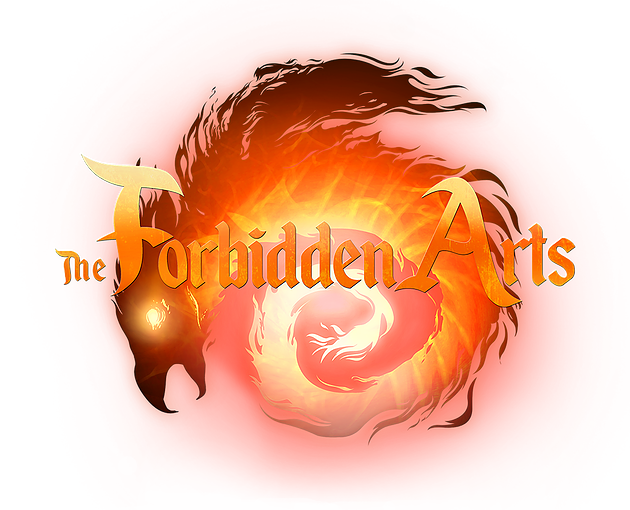
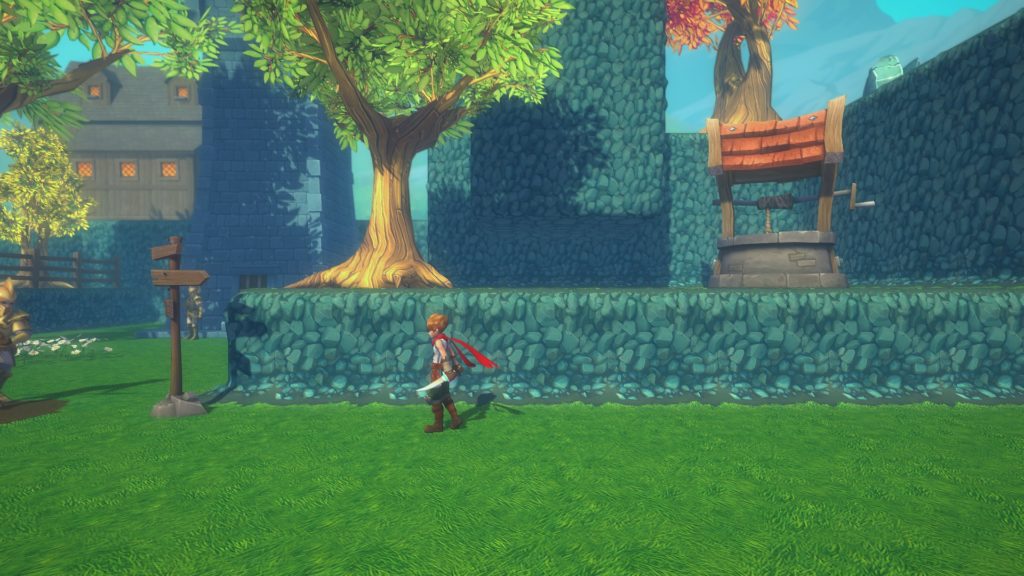
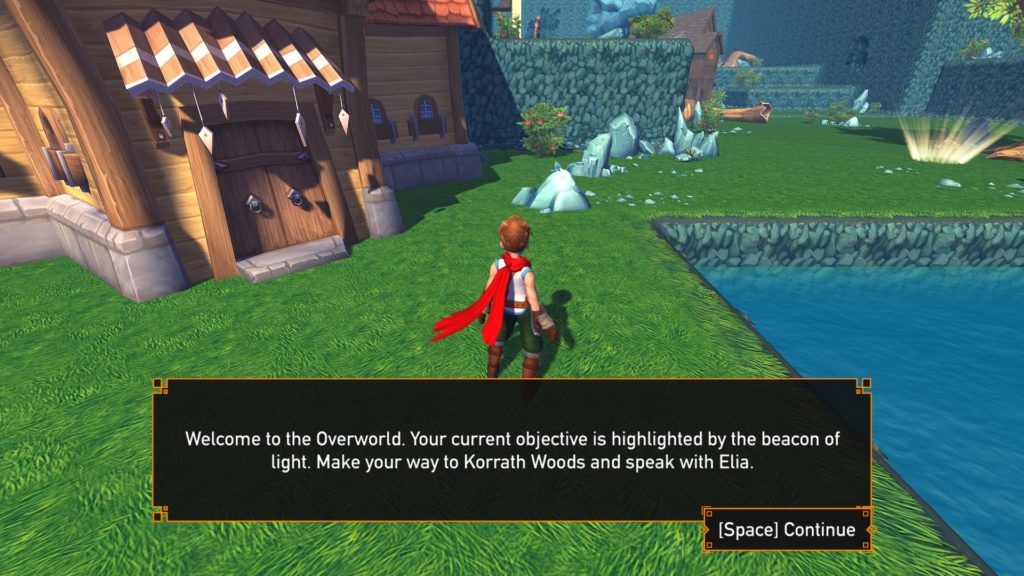
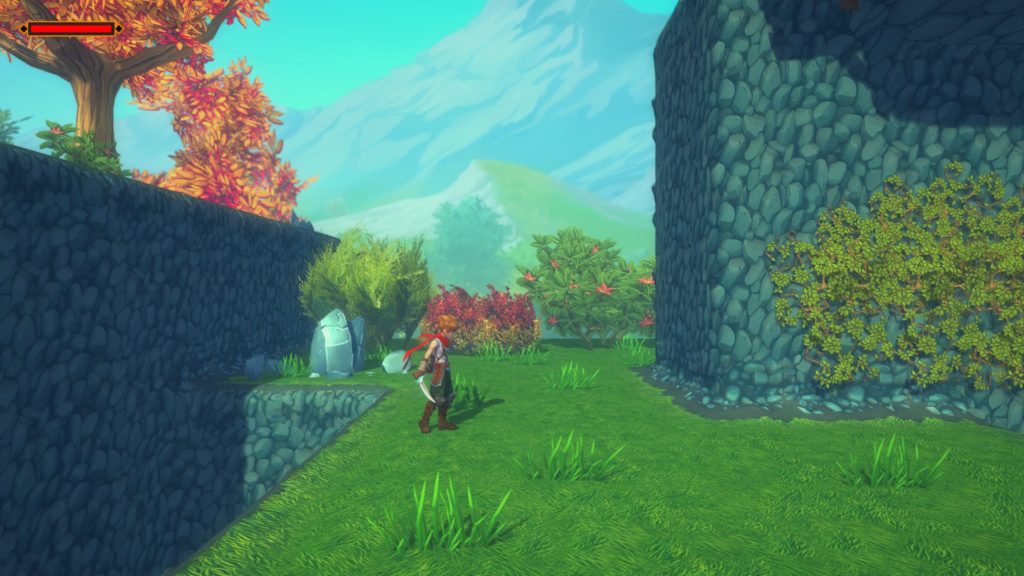
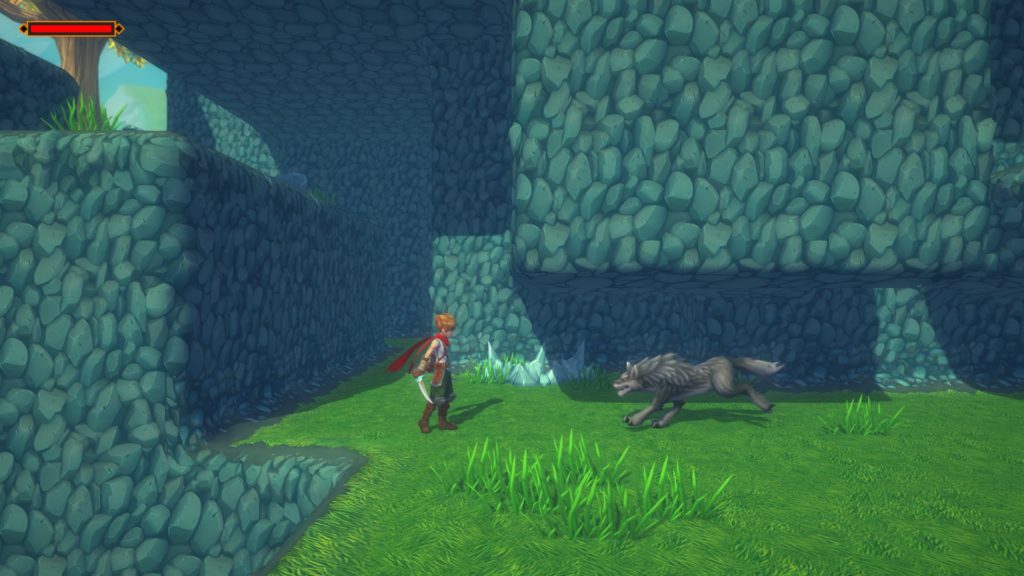

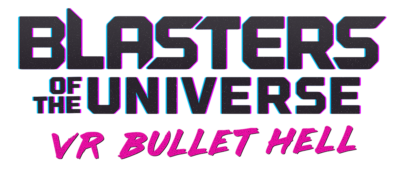 Developer/Publisher: Secret Location || Overall: 8.75 / 10
Developer/Publisher: Secret Location || Overall: 8.75 / 10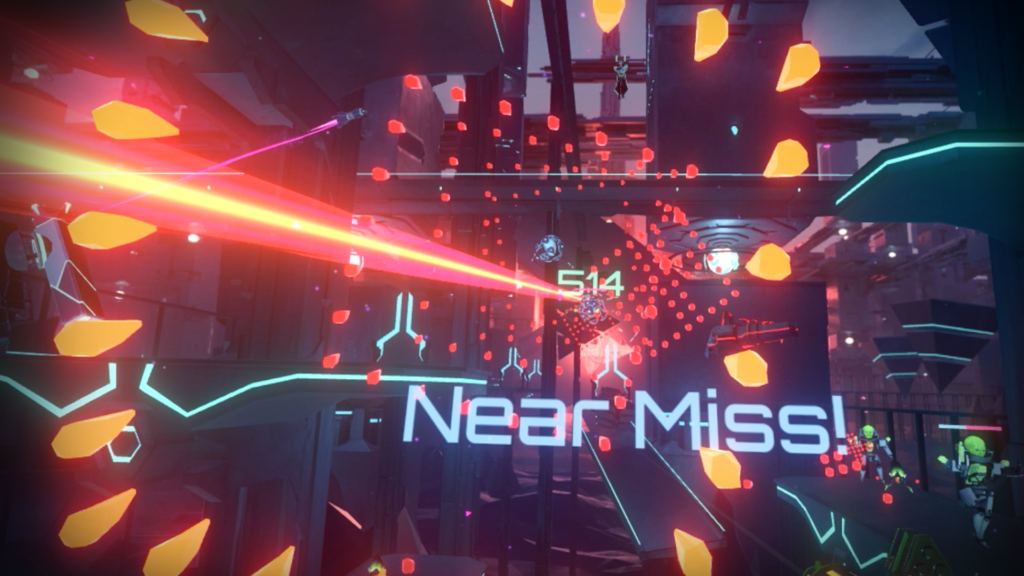

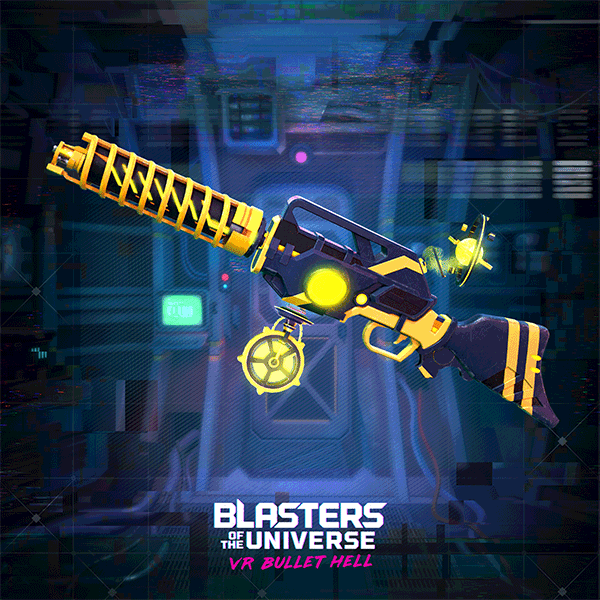
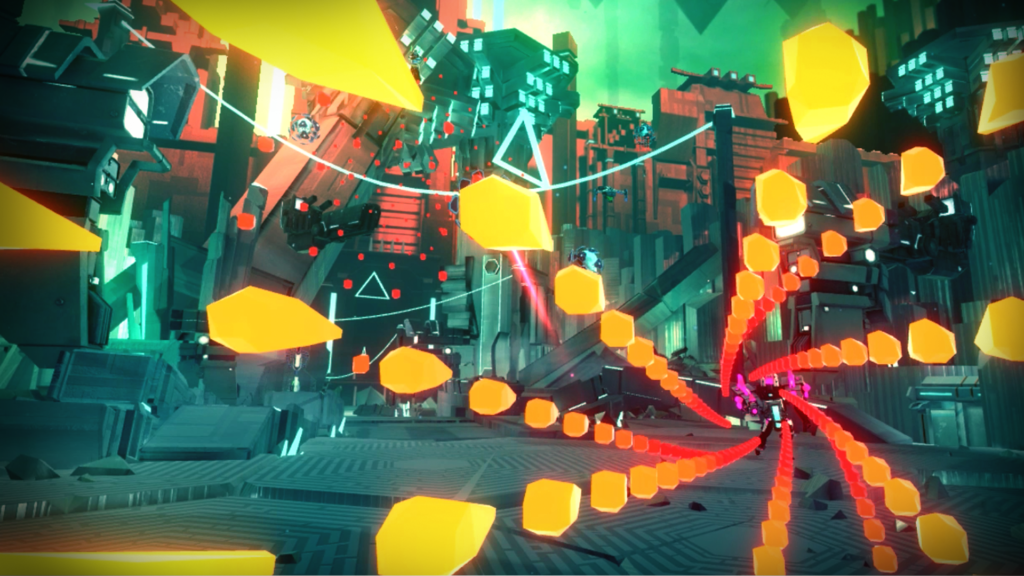
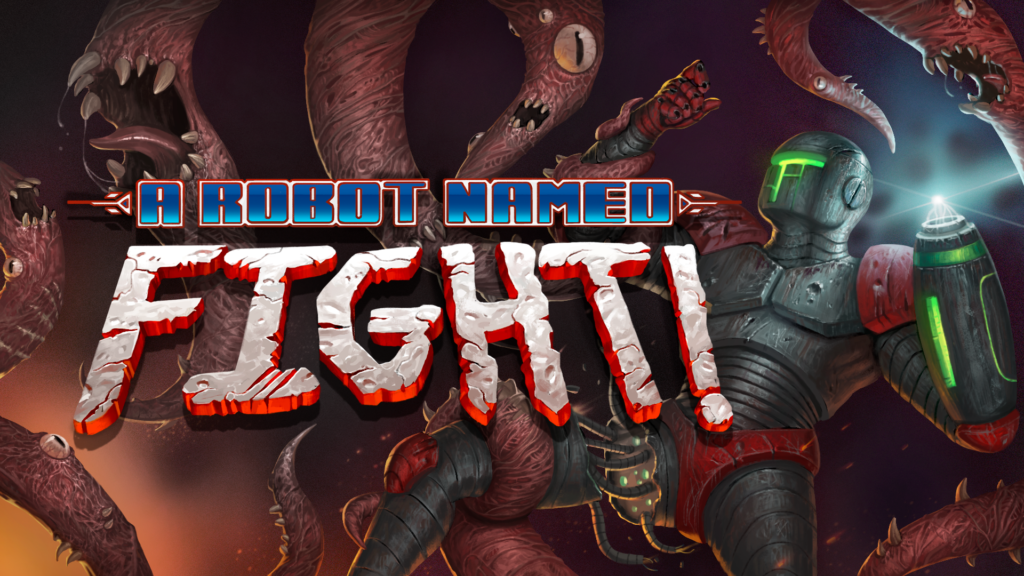
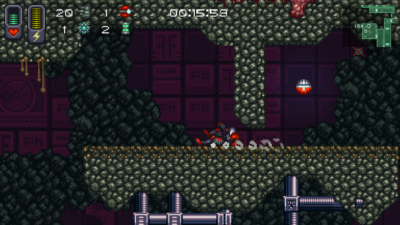
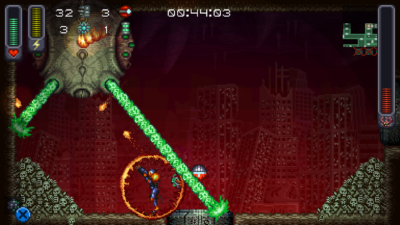
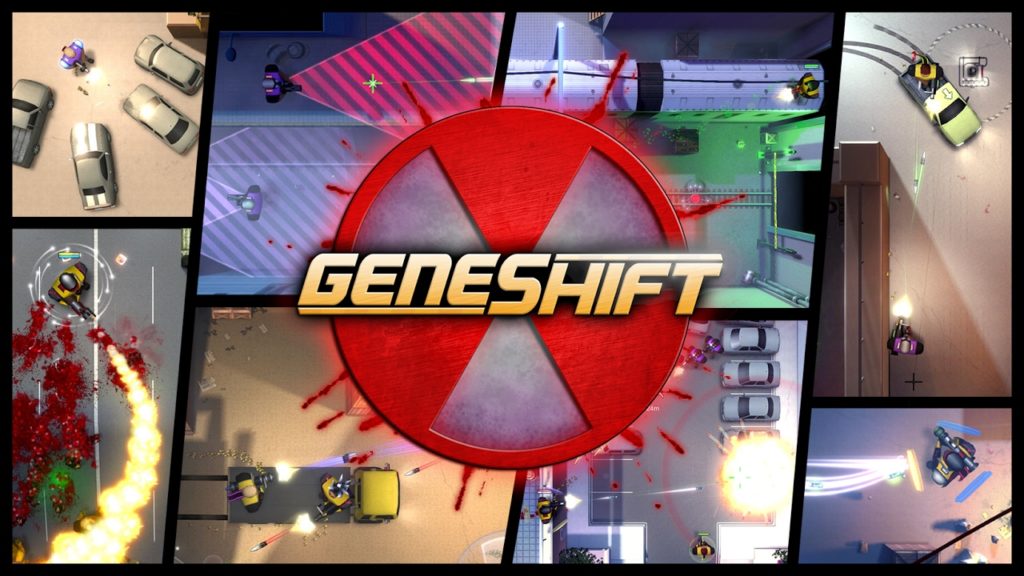
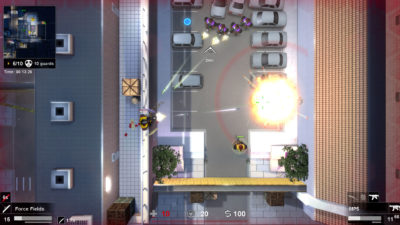 Geneshift is a top-down shooter, much like classic Grand Theft Auto games DMA Designs made before Nintendo got to them (yeah-I said it, bitch) and fucked the company into bankruptcy. You walk, you jump (surprisingly), you shoot. Occasionally you’ll use an ability, or drive a car. On the surface, it’s pretty simple. You’re a mercenary working for some lab, killing rebels or terrorists or something. Nothing particularly amazing, but it gets the job done. I don’t think it’s anything memorable, but it’s not the driving force behind this game.
Geneshift is a top-down shooter, much like classic Grand Theft Auto games DMA Designs made before Nintendo got to them (yeah-I said it, bitch) and fucked the company into bankruptcy. You walk, you jump (surprisingly), you shoot. Occasionally you’ll use an ability, or drive a car. On the surface, it’s pretty simple. You’re a mercenary working for some lab, killing rebels or terrorists or something. Nothing particularly amazing, but it gets the job done. I don’t think it’s anything memorable, but it’s not the driving force behind this game.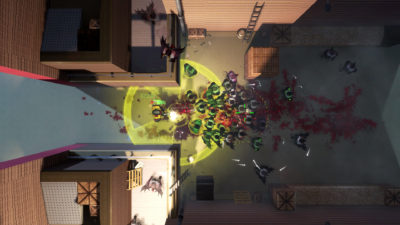 So, the grade versus the lack of description- what’s a game gotta do to get a “meh” around here? While Geneshift isn’t particularly out of this world, or a “must play” sort of game, it’s not really a bad one, or even one that’s just kind of okay. Simple, clean-looking games have their place. Soldat. Agar.io. LYNE. You could put Geneshift in that sort of group: simple games that are for casual consumption. There’s nothing sloppy about the controls or their implementation, and it can be rather fun at times, but it somehow it doesn’t offer enough to me. It’s got deathmatch, it’s got cooperative campaign options, it’s got a lot of the makings of something I would want to play often. For some reason, though, the perspective doesn’t do it for me like I felt it would when I initially started playing. Guns have variable engaging ranges, but they all end up averaging out once you factor in the perspective you play the game at. While it’s not inherently bad because of the perspective, the gameplay becomes somewhat tedious. Shooting enemies from below still takes cover into account, so sometimes you have to click on a very precise location to shoot someone that appears to be peeking by a ledge. Knowing what you can climb isn’t obvious without jumping up and down, which prompts ledges to highlight. Nothing’s particularly broken, but too often is there a moment where I get caught doing a jump and get stuck, or have to battle a level’s design because it requires perfect timing in jumps (no shit, by the way; I beat all of Cuphead on hard, but Geneshift is the only game in recent memory that managed to piss me off with a section of platforming).
So, the grade versus the lack of description- what’s a game gotta do to get a “meh” around here? While Geneshift isn’t particularly out of this world, or a “must play” sort of game, it’s not really a bad one, or even one that’s just kind of okay. Simple, clean-looking games have their place. Soldat. Agar.io. LYNE. You could put Geneshift in that sort of group: simple games that are for casual consumption. There’s nothing sloppy about the controls or their implementation, and it can be rather fun at times, but it somehow it doesn’t offer enough to me. It’s got deathmatch, it’s got cooperative campaign options, it’s got a lot of the makings of something I would want to play often. For some reason, though, the perspective doesn’t do it for me like I felt it would when I initially started playing. Guns have variable engaging ranges, but they all end up averaging out once you factor in the perspective you play the game at. While it’s not inherently bad because of the perspective, the gameplay becomes somewhat tedious. Shooting enemies from below still takes cover into account, so sometimes you have to click on a very precise location to shoot someone that appears to be peeking by a ledge. Knowing what you can climb isn’t obvious without jumping up and down, which prompts ledges to highlight. Nothing’s particularly broken, but too often is there a moment where I get caught doing a jump and get stuck, or have to battle a level’s design because it requires perfect timing in jumps (no shit, by the way; I beat all of Cuphead on hard, but Geneshift is the only game in recent memory that managed to piss me off with a section of platforming).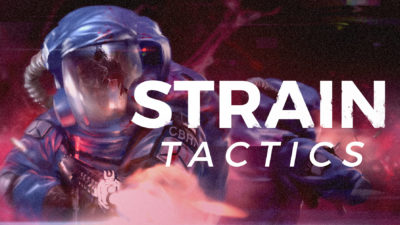
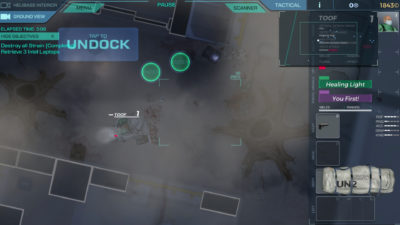 Alright, grab an XCOM. Any one of them will do, we’re just going for basic themes here. Dump that in. Now, scoop up some Alien Swarm (it’s free) and plop that in there, too. Now, and this is important, add a dab of tower defense. Just a bit. Trust me: it’ll make some sense. Hit “blend” and watch those mix up. Take the pitcher of your rather interesting mix of genres and pour that shit into a phone and you’ve got Strain Tactics from Touch Dimensions Interactive.
Alright, grab an XCOM. Any one of them will do, we’re just going for basic themes here. Dump that in. Now, scoop up some Alien Swarm (it’s free) and plop that in there, too. Now, and this is important, add a dab of tower defense. Just a bit. Trust me: it’ll make some sense. Hit “blend” and watch those mix up. Take the pitcher of your rather interesting mix of genres and pour that shit into a phone and you’ve got Strain Tactics from Touch Dimensions Interactive.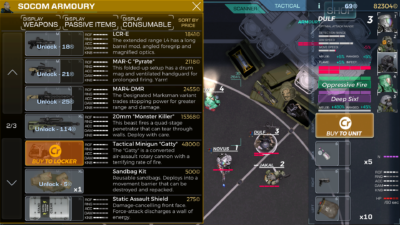 Despite most of the game revolving around directly positioning your squad members and marking targets to shoot (though they engage automatically if enemies are in range), the squad’s helicopter is fully controllable at all points of gameplay. The helicopter acts as a storage locker for gear, a transport for players and NPCs, and fire support against visible targets on the ground, which gives the player immense amounts of control about how they deploy, what their troops are armed with and what their exit point will be. Your team begins each mission aboard the heli, and they don’t disembark until you’ve decided to. It’s a refreshing amount of choice in a genre that routinely grants you limited power despite your role as a “commander” or whatever. When was the last time you had the option of landing your squad near your target in XCOM rather than running a fucking marathon from your drop zone? Oh, never? What about using your dropship to blast the shit out of dangerous enemy units before they become a threat to your squad’s objectives? What?! Never?! What a shame! It’s okay, though: Strain Tactics lets you do that. Using a minigun, a small cannon, or even some big ass firebombs, the helicopter can lay waste to outside targets. While it’s not always a viable option, what with interior locations and the occasional heavy foliage area, it’s a rather interactive way to support your squad in a way that makes a ton of sense. Why this hasn’t been done before in mainstream titles is baffling to me, but Strain Tactics delivers this sort of engaging gameplay dynamic in a tight little package. I’d dare to say that it’s something you could make a franchise off of.
Despite most of the game revolving around directly positioning your squad members and marking targets to shoot (though they engage automatically if enemies are in range), the squad’s helicopter is fully controllable at all points of gameplay. The helicopter acts as a storage locker for gear, a transport for players and NPCs, and fire support against visible targets on the ground, which gives the player immense amounts of control about how they deploy, what their troops are armed with and what their exit point will be. Your team begins each mission aboard the heli, and they don’t disembark until you’ve decided to. It’s a refreshing amount of choice in a genre that routinely grants you limited power despite your role as a “commander” or whatever. When was the last time you had the option of landing your squad near your target in XCOM rather than running a fucking marathon from your drop zone? Oh, never? What about using your dropship to blast the shit out of dangerous enemy units before they become a threat to your squad’s objectives? What?! Never?! What a shame! It’s okay, though: Strain Tactics lets you do that. Using a minigun, a small cannon, or even some big ass firebombs, the helicopter can lay waste to outside targets. While it’s not always a viable option, what with interior locations and the occasional heavy foliage area, it’s a rather interactive way to support your squad in a way that makes a ton of sense. Why this hasn’t been done before in mainstream titles is baffling to me, but Strain Tactics delivers this sort of engaging gameplay dynamic in a tight little package. I’d dare to say that it’s something you could make a franchise off of.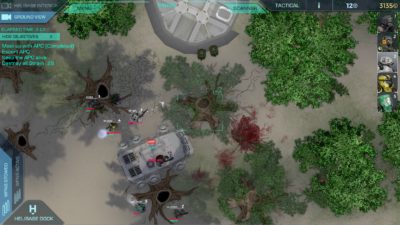 However, the honeymoon isn’t long. The game has problems, one so heinously rooted that I’m not entirely sure it can be easily fixed with patches: it’s a phone game.
However, the honeymoon isn’t long. The game has problems, one so heinously rooted that I’m not entirely sure it can be easily fixed with patches: it’s a phone game.
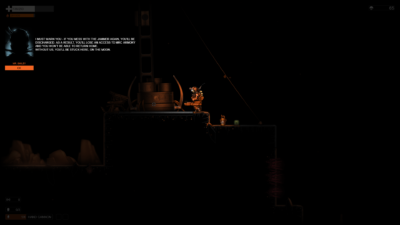 Oooh-eee! Sounds like a good time, huh? Some platforming, some complex puzzles… will I uncover all of Orange Moon’s secrets?
Oooh-eee! Sounds like a good time, huh? Some platforming, some complex puzzles… will I uncover all of Orange Moon’s secrets?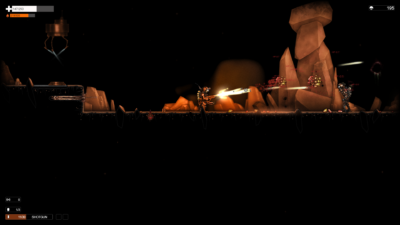 Fuel is tied to jumping, which means if you’re out or low you’ll spend a rather long amount of time waiting until you can climb out of a hole or make it through a jumping section, especially if you’re using the flamethrower a lot. This can be offset with upgrades, but the design isn’t really fun, it doesn’t add challenge, and it’s not interesting. Eventually, when upgraded, fuel is trivial and no longer serves a purpose, especially as the flamethrower becomes increasingly less useful. It just never seems to fit in with the rest of the game in a meaningful way that limits the player or forces choices outside of, “Do I want to wait a few minutes before I can climb out of this hole?”
Fuel is tied to jumping, which means if you’re out or low you’ll spend a rather long amount of time waiting until you can climb out of a hole or make it through a jumping section, especially if you’re using the flamethrower a lot. This can be offset with upgrades, but the design isn’t really fun, it doesn’t add challenge, and it’s not interesting. Eventually, when upgraded, fuel is trivial and no longer serves a purpose, especially as the flamethrower becomes increasingly less useful. It just never seems to fit in with the rest of the game in a meaningful way that limits the player or forces choices outside of, “Do I want to wait a few minutes before I can climb out of this hole?”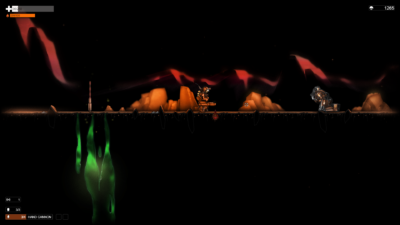 I think Orange Moon‘s most common problem is poor design. Enemies are not particularly difficult to deal with, often blocking a corridor perfectly with their height, acting almost as an aggressive door that needs to be unlocked with a shit load of ammo. Outside of the crappy turrets and plants all over the place, enemies tend to have a lot of hit points and armor that renders many guns useless without a lot of upgrades. All story is conveyed via text in the upper left corner of the screen, but when these kinds of events happen the entire screen darkens, aside from a small circle around your character, even if you’re in the middle of combat. Why do this? To force me to read this uninspiring story? Don’t interrupt the gameplay like that, man. That’s like the missus asking, “Are you done yet?” in the middle of “doin’ it”–it doesn’t really inspire enthusiasm, and it’s an extra unnecessary hurdle in trying to have some fuckin’ fun. Pile those two on top of my other complaints, and you don’t really have much of a reason to hang out in Orange Moon‘s world. Other games that are somewhat similar, even classics like Super Metroid accomplish the same thing without all the egregious errors.
I think Orange Moon‘s most common problem is poor design. Enemies are not particularly difficult to deal with, often blocking a corridor perfectly with their height, acting almost as an aggressive door that needs to be unlocked with a shit load of ammo. Outside of the crappy turrets and plants all over the place, enemies tend to have a lot of hit points and armor that renders many guns useless without a lot of upgrades. All story is conveyed via text in the upper left corner of the screen, but when these kinds of events happen the entire screen darkens, aside from a small circle around your character, even if you’re in the middle of combat. Why do this? To force me to read this uninspiring story? Don’t interrupt the gameplay like that, man. That’s like the missus asking, “Are you done yet?” in the middle of “doin’ it”–it doesn’t really inspire enthusiasm, and it’s an extra unnecessary hurdle in trying to have some fuckin’ fun. Pile those two on top of my other complaints, and you don’t really have much of a reason to hang out in Orange Moon‘s world. Other games that are somewhat similar, even classics like Super Metroid accomplish the same thing without all the egregious errors.
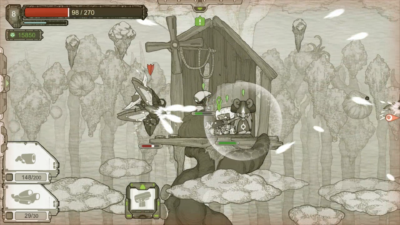 Alright, so in Original Journey (“original title do not steal”) you’re a plant thing in an exo suit on a mission with dozens of others to save your planet. For plot device reasons you’re not told why you’re on the planet Shadow (“original name do not steal”) aside from these green crystals, which, incidentally, a vibrant green object in an otherwise monochrome game. These things, you see, heal your folk and planet, or something. I don’t know. Anyway, a bunch more stuff happens that doesn’t even make sense in any context, like you needing to get monster teeth to make a translation program for your droid, or talking to a dude with amnesia that gives you an emerald-looking thing called a Chaos Key (“original concept and name do not steal”) and some schematics only your race could ever utilize. I don’t understand who’s writing this, or if it’s a translation error, but the story really needs, like… a spit shine, at least. It’s rough, and, at points: totally inane.
Alright, so in Original Journey (“original title do not steal”) you’re a plant thing in an exo suit on a mission with dozens of others to save your planet. For plot device reasons you’re not told why you’re on the planet Shadow (“original name do not steal”) aside from these green crystals, which, incidentally, a vibrant green object in an otherwise monochrome game. These things, you see, heal your folk and planet, or something. I don’t know. Anyway, a bunch more stuff happens that doesn’t even make sense in any context, like you needing to get monster teeth to make a translation program for your droid, or talking to a dude with amnesia that gives you an emerald-looking thing called a Chaos Key (“original concept and name do not steal”) and some schematics only your race could ever utilize. I don’t understand who’s writing this, or if it’s a translation error, but the story really needs, like… a spit shine, at least. It’s rough, and, at points: totally inane.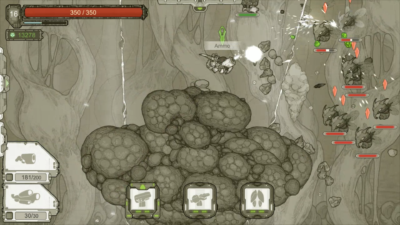 This title’s a sidescroller, and your character’s armament is limited to a suit (with a chip in it; think socketing items in Diablo or Path of Exile), a left weapon and a right weapon. Most of the weapons are guns, but for some reason you have no ability to aim these fucking things. Your vegetable’s aim sways back and forth at approximately an upward 45 degree angle, making anything with less spread than a shotgun annoying to use. Aiming directly at an enemy involves walking right next to them and fucking pulling the trigger. This means that often times, for air enemies, you’re jumping constantly in the air in order to do any good. Weapons have limited ammo, so often times you’ll be wasting most of your ammo trying to knock some bullshit out of the sky. This gets worse later, with enemies hanging out toward the bottom of the goddamn screen. WHY? WHY DO THIS? WHY THE FUCK CAN’T I AIM AT HIM? I HAVE TWO FUCKING GUNS AND I CA-
This title’s a sidescroller, and your character’s armament is limited to a suit (with a chip in it; think socketing items in Diablo or Path of Exile), a left weapon and a right weapon. Most of the weapons are guns, but for some reason you have no ability to aim these fucking things. Your vegetable’s aim sways back and forth at approximately an upward 45 degree angle, making anything with less spread than a shotgun annoying to use. Aiming directly at an enemy involves walking right next to them and fucking pulling the trigger. This means that often times, for air enemies, you’re jumping constantly in the air in order to do any good. Weapons have limited ammo, so often times you’ll be wasting most of your ammo trying to knock some bullshit out of the sky. This gets worse later, with enemies hanging out toward the bottom of the goddamn screen. WHY? WHY DO THIS? WHY THE FUCK CAN’T I AIM AT HIM? I HAVE TWO FUCKING GUNS AND I CA-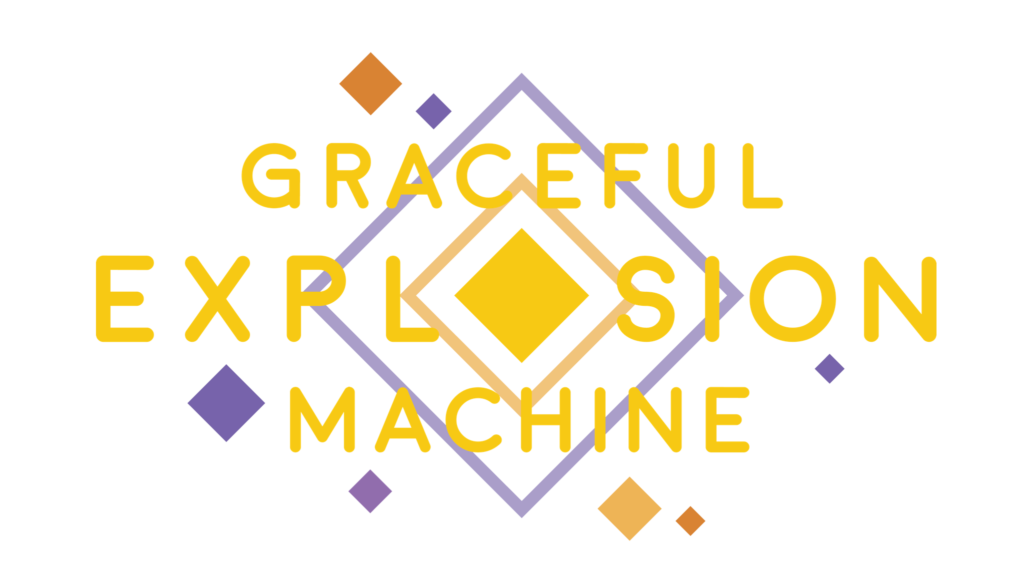
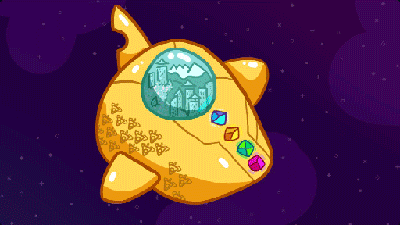
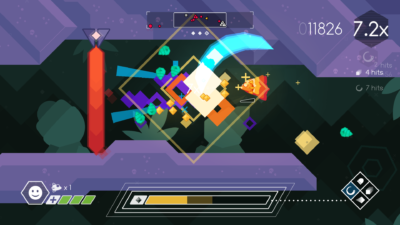 Now, for some reason this ship is unarmed until it picks up conspicuously laid out weapons in the tutorial, which is probably why these yellow guys got their shit ruined in the first place. First you get a pea shooter, which rapidly fires out blasts until it overheats, which is its only constraint. Second weapon, you get an “energy sword” which spins around twice on use, tearing into enemies and destroying enemy bullets. Next is a sniper beam, which is a very powerful beam that does a lot of damage and tears through enemy shields, but forces you to move slowly. The last is a missile barrage that can be directed out of your ship with a directional input before they race off to seek targets. With exception of the regular blaster, all weapons require weapon energy to fire. This is harvested from enemies on death via the yellow crystals they drop. The weapon energy meter doesn’t say what the max is, or how much each crystal is worth, nor is the energy required for attacks displayed anywhere, so it’s more of a fuel meter in that regard. Crystal/weapon power management seems to be the main bottleneck of player skill. Players need to swoop through slain enemies in order to get close enough to collect weapon power, which dictates how often you can use area of effect attacks. Gameplay quickly maxes out as an advanced game of chicken, blowing through enemies to collect weapon power to in turn massacre more enemies. The only real thing that mixes this up is how close enemies spawn, and if there’s an enemy that requires you to use the sniper cannon to kill quickly.
Now, for some reason this ship is unarmed until it picks up conspicuously laid out weapons in the tutorial, which is probably why these yellow guys got their shit ruined in the first place. First you get a pea shooter, which rapidly fires out blasts until it overheats, which is its only constraint. Second weapon, you get an “energy sword” which spins around twice on use, tearing into enemies and destroying enemy bullets. Next is a sniper beam, which is a very powerful beam that does a lot of damage and tears through enemy shields, but forces you to move slowly. The last is a missile barrage that can be directed out of your ship with a directional input before they race off to seek targets. With exception of the regular blaster, all weapons require weapon energy to fire. This is harvested from enemies on death via the yellow crystals they drop. The weapon energy meter doesn’t say what the max is, or how much each crystal is worth, nor is the energy required for attacks displayed anywhere, so it’s more of a fuel meter in that regard. Crystal/weapon power management seems to be the main bottleneck of player skill. Players need to swoop through slain enemies in order to get close enough to collect weapon power, which dictates how often you can use area of effect attacks. Gameplay quickly maxes out as an advanced game of chicken, blowing through enemies to collect weapon power to in turn massacre more enemies. The only real thing that mixes this up is how close enemies spawn, and if there’s an enemy that requires you to use the sniper cannon to kill quickly.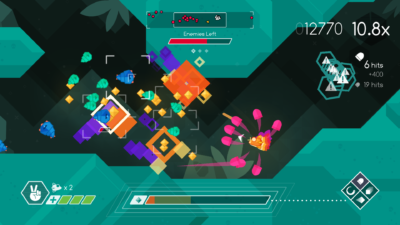 The game is divided into levels on four planets. A few open up for play, unlocking more as you complete them, culminating in a “warp” level to move on to the next planet. Each level has phases, which are this game’s checkpoint system; waves of enemies will spawn throughout an endlessly scrolling cave section as the player kills everything. Points are awarded for each kill, a multiplier in effect for consecutive kills and keeping a spree going. The ship is able to take three hits before dying, but each level has two continues, which can be utilized to restart from the beginning of the last phase that was started. The game isn’t exactly easy, but with tools like these, it’s not difficult either.
The game is divided into levels on four planets. A few open up for play, unlocking more as you complete them, culminating in a “warp” level to move on to the next planet. Each level has phases, which are this game’s checkpoint system; waves of enemies will spawn throughout an endlessly scrolling cave section as the player kills everything. Points are awarded for each kill, a multiplier in effect for consecutive kills and keeping a spree going. The ship is able to take three hits before dying, but each level has two continues, which can be utilized to restart from the beginning of the last phase that was started. The game isn’t exactly easy, but with tools like these, it’s not difficult either.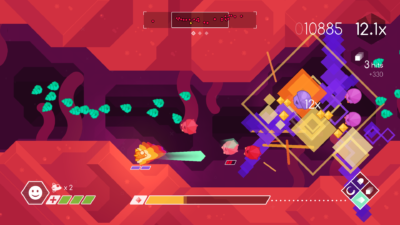 To its credit: the game runs well, and makes use of high refresh rate monitors. The music is benign, but not bad by any means. The controls on keyboard are serviceable, though I recommend controller. What’s more to say about a game that, mechanically, is solid even if there’s no carrot on the stick past score-whoring? There’s nothing particularly wrong with it, but it’s uninspiring, like a joke you’ve heard before, or a monologue on a topic you’re uninterested in.
To its credit: the game runs well, and makes use of high refresh rate monitors. The music is benign, but not bad by any means. The controls on keyboard are serviceable, though I recommend controller. What’s more to say about a game that, mechanically, is solid even if there’s no carrot on the stick past score-whoring? There’s nothing particularly wrong with it, but it’s uninspiring, like a joke you’ve heard before, or a monologue on a topic you’re uninterested in.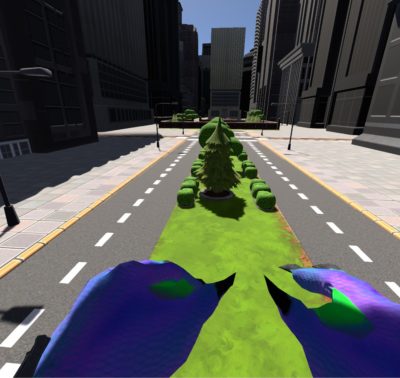 First thing’s first: the unskippable tutorial. You’re not allowed to play the main game or multiplayer without being a big boy and/or girl and playing along with the voiceover’s lesson plan, so I figured I’ll just jump through the hoop. I appear to be a big fishy monster with a big ass watch on my left arm. It’s not super clear from the narration, but from the store page description you can piece together that this annoying dude in your ear is yourself. They teach you how to walk, and then explain some basic monster techniques at your disposal: punching, grabbing, throwing, climbing and jumping.
First thing’s first: the unskippable tutorial. You’re not allowed to play the main game or multiplayer without being a big boy and/or girl and playing along with the voiceover’s lesson plan, so I figured I’ll just jump through the hoop. I appear to be a big fishy monster with a big ass watch on my left arm. It’s not super clear from the narration, but from the store page description you can piece together that this annoying dude in your ear is yourself. They teach you how to walk, and then explain some basic monster techniques at your disposal: punching, grabbing, throwing, climbing and jumping.